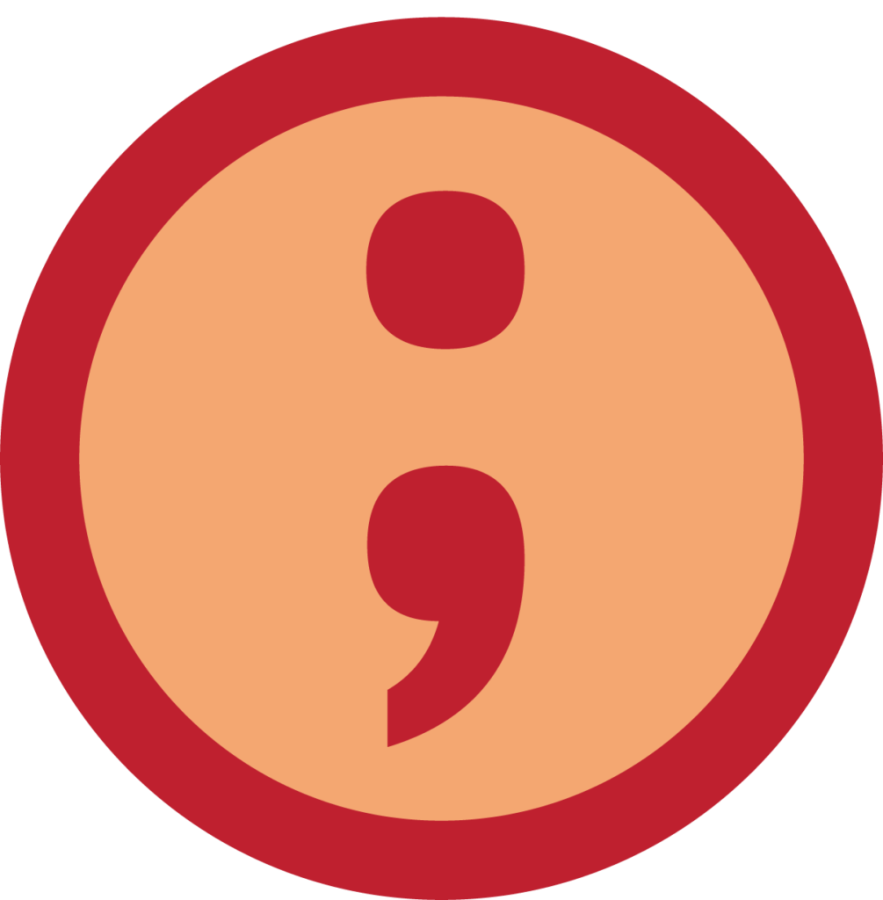Hey everyone! As the Head Copyeditor for the Mass Media, I figured I could give you all some tips and tricks to up your grammar game. For this first week: Let’s talk semi-colons. Semi-colons are that weird, winky-looking punctuation mark that you always hit by accident when you want a colon and forget to press shift; they are a tricky punctuation mark with some fickle rules, so let’s get into it!
The biggest thing to know about semi-colons is that we are all using them way less than we should; they are one of my favorite punctuation marks and I feel like they are so underappreciated; they seem to confuse way too many people, but I’m here to help you figure out how, where, when, and why you use them!
So, how do you use a semi-colon? Well, that’s easy, you press the button next to the “L” key; onto the next question!
Where do you use semi-colons? Obviously in sentences. Geez, everyone, keep up. More specifically, you use semi-colons in between two full sentences; there are many rules that go along with exactly which sentences get to have semi-colons and which ones get to have periods; this is where things get iffy.
You use semi-colons whenever you want; there isn’t any specific pair of sentences that get to have semi-colons; I lied to you in the last paragraph; I need to get my entertainment somewhere, right? Periods get way too much attention, if you ask me; I feel like semi-colons need to have the spotlight more often; they make sentences and paragraphs flow so nicely when you replace all the periods. I mean look at how harsh that little dot looks on the page; it needs some flow; it needs to sit on top of a comma—oh, just like a semi-colon.
Now, onto when you use semi-colons; whenever you want; I am not here to tell you not to do anything; I am here to encourage all good and bad behavior; so, live it up with your punctuation! If you want to be technically correct—boring—then you can only use semi-colons to join two sentences that are so closely related, subject-wise, that you would want them to be one sentence, but that would cause a run-on; but where’s the fun in that? That lame rule is why semi-colons don’t get the attention I think they deserve; it just confuses everyone; so, instead, I am here to tell you to live it up with your punctuation—that’s why they put me in charge of all the grammar in the Mass Media, obviously.
Another rule that goes along with when to use semi-colons has to do with the word “however.” However, when it is used to join two sentences, should always be preceded with a semi-colon; just ask one of our copyeditors, Riley, she’s a real stickler for proper punctuation when you use “however.” This is my favorite rule with this superior punctuation mark because you can just stick “however” between two sentences and you suddenly have to use a semi-colon; if you haven’t guessed by now, no amount of semi-colon use is too much; there can always be more periods that you replace and more sentences that you can join together. So, go crazy with your use of this conjunctive adverb—well that’s a fancy term—and fill your papers with semi-colons; you’ll definitely have my approval.
Finally, my favorite question, why do you use semi-colons. It’s because they are the best-looking punctuation mark; they have always been my personal favorite, and I know that they’re a favorite for a couple of the writers here at Mass Media as well. Here’s my final advice to you on this topic: If you ever feel like a semi-colon could work in a sentence, then stick one in there; they are under-appreciated as it is.
I hope you have all learned more about semi-colons this week! I want to see more of them in everyone’s papers and assignments! Check back next time to learn more about oxford commas—hint, you should stop using them. If you have a grammar question that you want answered, then feel free to stop by the Mass Media office and you just might get me to write a whole column on that topic. Now, get to writing those papers you’ve been putting off and be sure to include some semi-colons just for me!
Grammar with the Head Copyeditor: Semi-Colons and their use
November 4, 2022
About the Contributor
Bridget McColgan, Head Copyeditor





















































